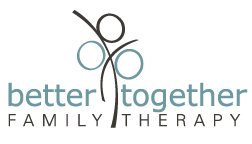ADHD in Women: The Missing Piece
How does the average person imagine ADHD? Hyper little boys? Kids with no impulse control? Disorganized students who can’t focus? This definitely describes some people with ADHD. But it doesn’t come close to capturing the complexities or nuances of the ADHD experience. There are millions of people whose ADHD manifests in ways that can be overlooked or misdiagnosed for years. And many of them are women.
Our Maryland therapists treat women with ADHD every day. Here’s what we see.
Why don’t women with ADHD look like children with ADHD? Children display their emotions and act out their experiences. They communicate through direct expressions like crying, screaming, hitting, or running. When you were a child you did that too. But by the time you reach adulthood, much of your “behavior” has moved inside your head. You start thinking before you act (at least sometimes). And your experiences become less visible to others.
External vs. Internal: The Challenges of ADHD Inattentive Type
While some women and girls do have ADHD Hyperactive/Impulsive Type, symptoms of inattention are more prevalent in girls and women. And ADHD Inattentive Type’s more internal presentation is harder to observe, easier to mask, and more often misunderstood.
Imagine a woman in her thirties or forties, who struggles with:
Feeling overwhelmed and unorganized
Emotional eating
Money mismanagement
Feeling either exhausted or exhilarated, with no in-between
Forgetting things & spacing out
Bouts of social anxiety when faced with large crowds or over-stimulation
Messy surroundings
Sudden and unexplained agitation and mood swings
Acute sensitivity to any perceived criticism or slight
Extreme self-criticism & low self-esteem
An inability to bring her good ideas to fruition
Difficulty maintaining friendships
Diagnosed Depression and/or Anxiety
This woman likely feels responsible for all these challenges. And believes she could make them all better if she just tried harder…a message she has heard from others her whole life. But like many women in her position, she has undiagnosed ADHD.
Why are women with ADHD underdiagnosed?
According to Edward M. Hallowell and John J. Ratey’s ADHD 2.0., “females of all ages remain the most undiagnosed group” of people with ADHD. You may not be able to see many of the effects of adult ADHD or inattentive ADHD. But they are still there. And the biggest effect is often on self esteem.
ADHD is a behavioral diagnosis
ADHD is diagnosed based on the behaviors we see. In childhood, parents and teachers are asked whether a child has trouble starting or finishing tasks, remaining seated, or waiting their turn. The full list of behaviors includes 18 items, 9 of which reflect hyperactivity/impulsivity, and 9 of which reflect inattentiveness.
If a person exhibits at least 6 behaviors in the inattentiveness section (but not the other section), they are diagnosed with “ADHD, predominantly inattentive presentation.” You can see why we say “inattentive type” for short. A person with 6 behaviors from the hyperactive/impulsive section is diagnosed with “ADHD, predominantly hyperactive/impulsive presentation” (hyperactive type). A person with 6 or more behaviors in both sections is diagnosed with ADHD, combined presentation (combined type).
In childhood, that diagnosis is based on what adults perceive the child to be experiencing. Did the teacher notice the child having difficulty finishing work? And did they interpret it that way? Or did they think she didn’t finish her work because she was “too chatty,” not realizing that being hyperverbal is a type of hyperactivity? In adulthood we ask the person to self identify these behaviors. And what do we see? Women self report having these challenges all their lives.
Underdiagnosing ADHD is harming women and girls
The gender blind spot around ADHD starts early. Because girls generally do not exhibit the same behavioral challenges as their male counterparts, their struggles in school are often overlooked. The boy bouncing off the walls and talking over the teacher is far more likely to be flagged for ADHD screening than the girl who sits quietly in her seat, looking out the window…even though they may be equally disengaged.
Socialization plays an important part in this situation. Girls are often quick to recognize the expectations society has for them, and will often develop coping strategies to mask their difficulties. For decades, evidence of clear difficulties from an early age were required for an ADHD diagnosis. These criteria do not account for the ways girls may conceal their difficulties. These girls may study more to make up for their academic challenges. They may become expert people-pleasers, doing everything they can to fit in. Because they are so effective at pretending that nothing’s wrong, they may experience academic underachievement that baffles their teachers and parents.
They start to believe that they are lazy and incapable, that they just need to try harder.
As the pressures and responsibilities of adulthood mount, their sense of overwhelm grows exponentially. The strain of constantly trying to meet impossible expectations causes real psychological distress.
Most women later diagnosed with ADHD are first diagnosed with mood disorders like Anxiety or Depression.
The good news is, more research is being done to properly understand and treat ADHD in girls and women. As practitioners become more aware of these nuances, more and more adult women have discovered that what they thought of as shameful character flaws are actually symptoms of a very treatable condition.
And there’s even more good news. Receiving an ADHD diagnosis in adulthood is associated with an immediate improvement in ADHD symptoms. That’s right. Knowing that you have ADHD makes you better at managing it. And we can help with that. With treatment and therapy, women with ADHD can develop healthy coping strategies, self-compassion, and a far more positive self-concept.
Puzzled by the challenges you’re having in managing adult life? An adult diagnosis of ADHD just might be the missing piece in your mental health puzzle. Once the picture is clear, better understanding and deeper healing can begin. Click here to get started.

